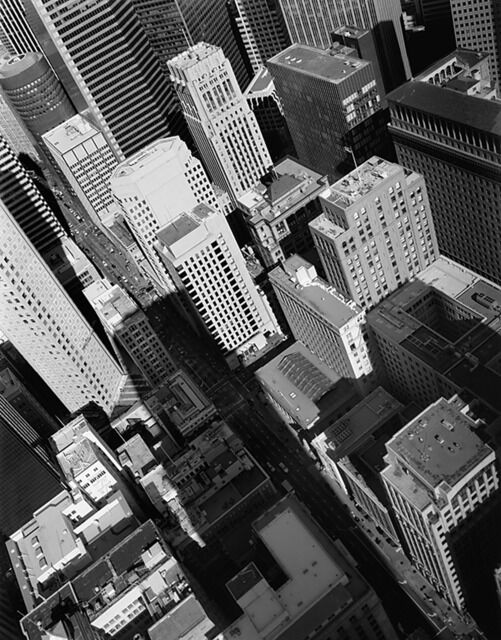Mood Board














Gabriele Basilico was an Italian photographer, who defined himself as a measurer of space. Born in Milan, after studying architecture Basilico began his profession as a photographer devoted to landscape photography and more particularly to architectural photography. His work was characterized by a rigorous composition, precise geometry, and a focus on the interaction between people and their environment. To give him international fame in 1982, it was a photographic report on the industrial areas of Milan. In the mid-80s he was part of the group of photographers committed by the French Government to document the transformation of the Transalpine landscape. In 1991 with the celebrated Beirut 1991 he documented the war effects on the Lebanese capital. His last work was showed in December 2012, at the inauguration of new square Gae Aulenti in Milan: a series of photographs that portrayed the Porta Nuova Project from its inception. He worked mostly with a view camera and film in black and white.

One of Basilico’s most well-known projects is his documentation of the transformation of the city of Berlin after the fall of the Berlin Wall in 1989. His photographs of the city’s abandoned buildings and empty streets capture the sense of uncertainty and change that characterized this period of German history.
I chose to look at Gabriele‘s work as I think they fit very well into the theme of simple & complex, plus my focus on architecture. I have already come up with some locations to capture similar images.
Image Analysis 1

I chose to look at this image as it represents the theme of complex through a shot of the center of Naples, Italy. Taken from on top of a high-rise building, it has a cool birdseye view of the intricate buildings as well as the roads full of cars. There is a lot going on in this image, and it includes various different types of buildings with different architectural styles varying from old buildings to modern designs.
This is a good example of monochrome photography as it turns a more complex photo into one that is more simple to digest and interpret visually. This is something I will be including in my project as I believe that a mix of monochrome and polychrome pieces as it will add more depth and variety to the project – further contributing to the theme of complex.
While I wasn’t able to find much information with regard to the context of the image, I can assign it some context with that during 2004, Naples was enduring frequent turf wars between Mafias, causing dead bodies to be discovered frequently. I feel that. the angle of this photo gives a slightly unnerving feeling as when combined with the birdseye angle it could be the view of an eagle swooping in to catch its prey, as the cars and people in the street sit so vulnerable beneath.
This is a good contrast to my other analysis of photographer Matthieu Venot with regard to my assigned theme of simple and complex as obviously, the images are on opposing sides of that scale with Matthew’s work featuring simple shapes and block colours to generate ‘reaction’ or please the viewer, whereas Garbriele uses scenes and subjects such as cityscapes or war-torn buildings filtered through black and white in order to have the viewer think more about what they’re seeing and why the photographer has chosen to present it to them – in term adding complexity to a normal image.
How can I reference Gabriele’s work in my project
I will be referencing Gabrielle’s work in some of my pieces not only through the use of similar shots, angles, and filters but also through the context of the scenes I’m shooting. For example he has some images of broken buildings from places where the war has ruined entire towns, and so by shooting the remains of a building, it adds complexity to the images as the viewer is either presented with the context/ backstory which makes the photo deeper than a photo or they are left to imagine what could be the story behind the picture.
This is an idea I can pick up on as there is now a few POI’s in Jersey where there is major architectural changes happening and while it may not be as dramatic as the subjects covered by Gabrielle, they will still be following the same idea of photographing a scene which holds a deeper meaning when given context therefor creating some form of complexity.
Photoshoot Locations







Response 1 – Fort Regent + Gorey
For my first photoshoot I will be visiting Fort Regent to take advantage of its prime elevated viewpoints looking out over town.

I will be taking photos for both sides of the project as from these points I will have angles on the roof of Fort Regent, and La Collete flats as well as the intricate streets of St Helier.
Conditions
In order to create images with the same looks as those of Vernot and Gabriele’s I will need to ensure the weather (more specifically the sun) is at the right point . This means for my simple shots of the sides of buildings I would ideally want clear skys with no clouds, and for the sun to be in a position directly above the subject building so it isn’t creating shadows however this is something I could potentially fix in editing (Photoshop / Lightroom).
For my complex series, the weather doesn’t matter as much as I will likely be making the images monochrome anyway. A clear sky would be ideal however I will also be looking for some clouds to add to the images.
Contact Sheet

Selections


